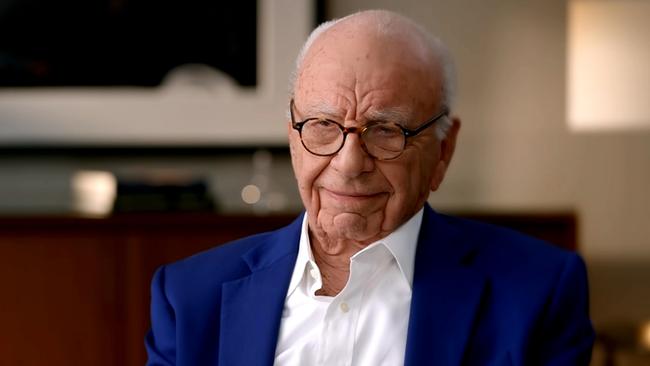Rupert Murdoch’s love for The Australian, a paper that changed our media landscape
In a series of interviews for a documentary to mark the 60th anniversary of the national broadsheet, Rupert Murdoch said he ‘loves’ The Australian, and admires what it has done for the country.

Rupert Murdoch has spoken of his immense pride in The Australian newspaper, the masthead he founded in 1964, and reflected on its importance to the nation’s media landscape in a new documentary to air next month.
In a series of interviews to mark the 60th anniversary of the national broadsheet on July 15, Mr Murdoch said he “loves” The Australian, and admires what it has done for the country.
“Of course I love it, I’m proud of it,” Mr Murdoch told his interviewer, Paul Whittaker, the chief executive of Sky News Australia and a former editor-in-chief of The Australian.
“It’s taken a lot of sweat, effort and money. But it was important to do. It had a great effect on Australia. In the early days it changed the existing papers, which were so parochial.”
Mr Whittaker asked Mr Murdoch what he thought his father, Keith Murdoch – a media proprietor who long dreamt about creating a national newspaper – would have felt about the “achievement” of The Australian.
“I hope he’d approve. He might have some questions about some of our sensational tabloids, but not The Australian,” Mr Murdoch said with a smile.
The Australian: 60 Years of News was conceived by Mr Whittaker and produced over a 12-month period by Sky News Australia’s documentary team.

Through many of the newspaper’s classic front pages, and using news footage, the documentary recalls some of the biggest news stories and newsmakers of the past 60 years, and features interviews with prominent figures who have contributed to the masthead’s six decades of national affairs coverage, including the newspaper’s founder.
Mr Murdoch, now chairman emeritus of News Corp and Fox Corporation, also reflected on some of the struggles during the early days of The Australian, and the battle to deliver editions to all corners of the country.
When it was printed in Canberra, the city’s thick fog would often delay delivery. Mr Murdoch would regularly travel to the airport in the middle of the night, in his pyjamas, to discuss flight schedules with pilots, such was his determination to see the papers arrive at their destinations on time.
“They were killers,” Mr Murdoch said of those early morning dramas in the national capital.
The documentary, which will screen at 8pm AEST on Monday, July 15 also features an interview the newspaper’s founder did with the ABC not long after the masthead’s launch.
Asked in the interview which of his newspapers he cared about the most, Mr Murdoch said: “The Australian, I think, certainly at the moment. It’s been the greatest challenge and certainly the biggest task that’s been ever put before me in life yet, to establish this paper and overcome the obstacles that we have. We still have more to overcome yet.”
The Sky documentary includes interviews with The Australian’s editor-in-chief, Michelle Gunn, editor-at-large Paul Kelly, former editor-in-chief Chris Mitchell, columnist Janet Albrechtsen, investigative journalist Hedley Thomas and cartoonist Johannes Leak, as well as political leaders.
The documentary is hosted by Sky News’s Chris Kenny, an associate editor of The Australian.
Mr Whittaker said: “With … The Australian: 60 Years of News, we set out to bring audiences the remarkable story of the establishment and growth of a national icon. With limited archival video resources, we knew from the start that crucial to the retelling of The Australian’s six decades of news would be interviews with those who have played an integral part in the shaping of the masthead, with the centrepiece interview being the newspaper’s founder, Rupert Murdoch.
“The candid interviews document Mr Murdoch’s early aspirations for the paper, which at the time of its launch was the most important and difficult venture for the then 33-year-old, who was determined to fulfil his father’s dream of establishing a national paper, and also capture his thoughts on the future of the masthead.”



